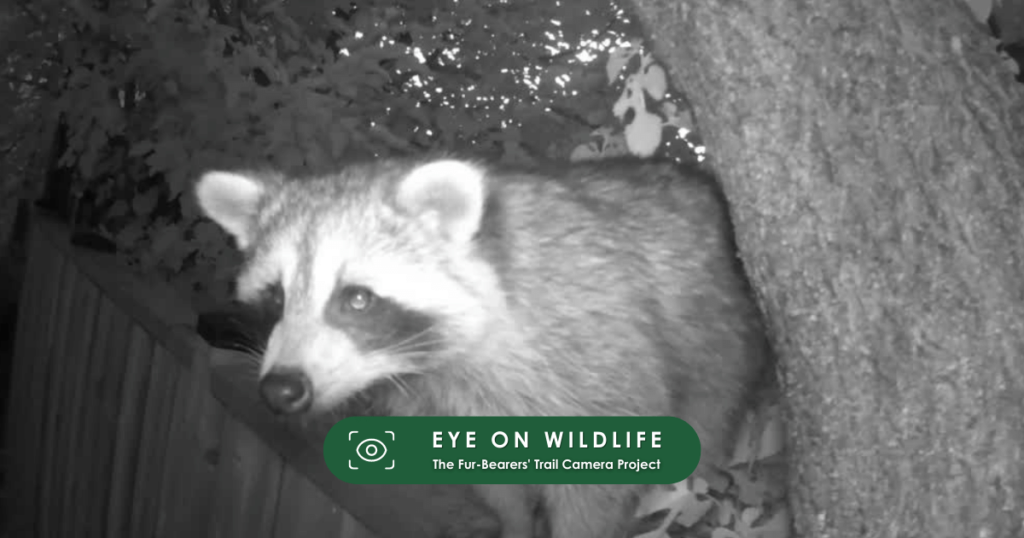
By Michael Howie
Caution and curiosity are clear in the behaviour of a raccoon who wandered down the urban fence on a blustery September 1 morning. It’s this caution and curiosity that I’m taking as an indicator it’s time to move the trail camera, too.
The fence, which incorporates a dead apricot tree of significant size, is a popular passageway for urban animals. Trail cam footage has shown raccoons, rats, possums, squirrels and birds all make use of the top of the fence as a quick pathway across the yard. A small gap beneath the fence welcomes these species, as well as skunks, rabbits, and community cats.
The trail cameras I use typically don’t affect the behaviour of the animals much – with the exception of a cranky skunk who was uncertain about the trail cam when it first landed near a den site under a shed. I can often see behaviour that indicates caution and curiosity – but this little raccoon visitor showed me that perhaps this exact location isn’t one I should reuse.
While amusing and adorable, the caution this raccoon showed could be a result of the initiation of the infrared camera. When the camera detects movement, it uses infrared lights to illuminate the target area and create enough brightness for the camera to capture an image. As mammals don’t see infrared, this is typically not something that will disturb them.
However, the actual camera turning on, the switching on of the infrared lights (which look like soft red dots to the human eye in the dark), and any other potential mechanical sound could startle or raise concerns for animals. Typically, I situate the camera to catch a scene – to show the movement across an area. This time, I tried setting it to face down the fence line itself. Clearly, this disrupted at least one raccoon’s adventure.
While the trail cam placement didn’t cause any harm to this raccoon, it caused a pause. And any change in behaviour is something I want to avoid: keeping wildlife wild is a priority. As such, the camera location will pivot. I’ll still find many ways to capture video and images of the many species who traverse this fence, but I will spend the time to ensure I’m having the minimal impact on them as possible. After all, they’re learning to adapt to us every day. It isn’t a lot for us to adapt to them.
Do you have great trail cam footage from your urban or rural home? Send it in to us via info@TheFurBearers.com, or tag us on our social media channels when you post. Your video or photos may become a future Eye on Wildlife Post!
Michael Howie is the Director of Communications for The Fur-Bearers and host of the Defender Radio and The Switch podcasts. He lives in urban Hamilton, Ontario, on the traditional territories of the Erie, Neutral, Huron-Wendat, Haudenosaunee and Mississaugas.
